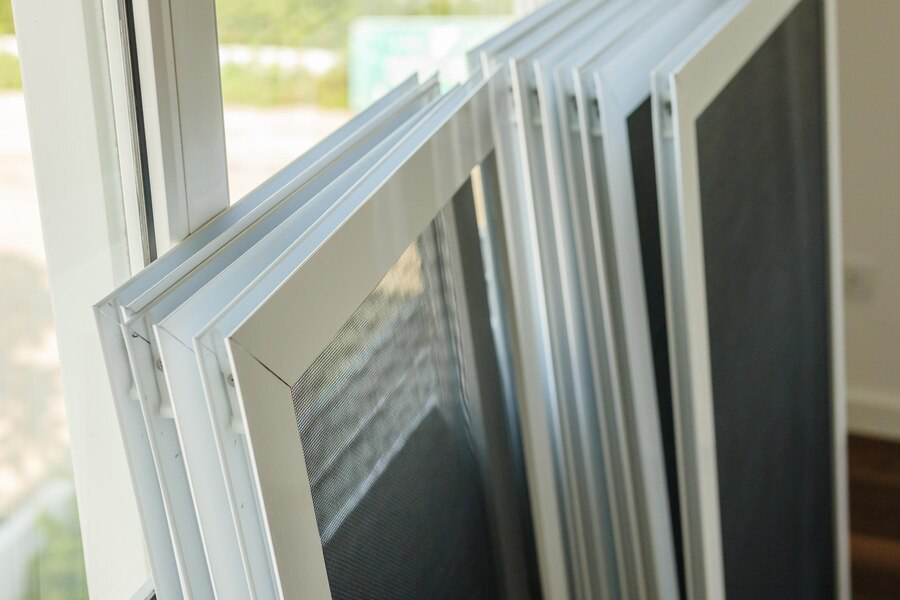
Factors That Affect the Cost of Replacement Windows
Replacing windows is a significant investment for any homeowner, and understanding the factors influencing costs can help you make informed decisions. Several key elements contribute to the overall expense of replacement windows. Firstly, the type and quality of materials used play a crucial role. High-quality materials such as vinyl, fiberglass, or wood typically incur higher costs but offer superior durability and energy efficiency in the long run. Secondly, the size and number of windows being replaced directly impact the total expenditure. Larger windows or a greater quantity of windows will naturally cost more due to increased material and labor requirements. Additionally, the complexity of the installation process, including any necessary structural modifications or customization, can also affect pricing. By considering these factors and consulting with reputable contractors, homeowners can better plan and budget for their window replacement project, ensuring they achieve both aesthetic appeal and functional efficiency for their homes.
Material Matters: Understanding the Impact on Cost
When considering replacement windows for your home, one of the most significant factors influencing cost is the choice of material. Windows come in various materials, each offering unique benefits in terms of durability, energy efficiency, aesthetics, and maintenance requirements. Understanding how these materials affect the overall cost can help you make an informed decision that aligns with your budget and long-term goals.

Vinyl Windows: Affordable and Low Maintenance
Vinyl windows are a popular choice among homeowners due to their affordability and low maintenance requirements. Made from polyvinyl chloride (PVC), these windows are durable, resistant to moisture and humidity, and typically come with energy-efficient features such as double or triple glazing. The cost of vinyl windows can vary depending on factors like the thickness of the vinyl, the quality of the frames, and additional features such as UV protection or custom colors.
Wood Windows: Classic Elegance with a Higher Price Tag
Wood windows offer a timeless aesthetic appeal that complements traditional and historic homes. They are known for their natural insulation properties, providing excellent thermal efficiency. However, wood windows are generally more expensive than vinyl or aluminum due to the higher cost of materials and the craftsmanship involved in their production. Homeowners choosing wood windows should consider ongoing maintenance requirements such as painting or staining to protect against weathering and prolong the lifespan of the windows.
Aluminum Windows: Sleek and Modern, with Durability
Aluminum windows are prized for their strength and durability, making them suitable for large expanses of glass and contemporary architectural styles. They are lightweight yet robust, resistant to corrosion, and require minimal maintenance. While aluminum windows can be more expensive than vinyl, their longevity and sleek appearance may justify the investment for homeowners seeking a modern aesthetic with high-performance capabilities.
Fiberglass Windows: High Performance and Low Maintenance
Fiberglass windows combine the strength of composite materials with the energy efficiency of insulated glass. They offer exceptional durability, thermal performance, and resistance to warping, expanding, or contracting with temperature changes. Fiberglass windows are generally more expensive than vinyl but can provide significant long-term savings due to their energy efficiency and minimal maintenance requirements.
Composite Windows: Innovation Meets Affordability
Composite windows blend various materials such as wood fibers and polymers to create a durable, low-maintenance window option. They offer the aesthetic appeal of wood with the durability and moisture resistance of vinyl or fiberglass. Composite windows are typically priced higher than vinyl but lower than wood or fiberglass, making them a cost-effective choice for homeowners looking for a balance between performance, aesthetics, and affordability.
Labor Costs: Understanding Installation Expenses
When budgeting for replacement windows, it’s essential to consider not only the cost of the windows themselves but also the expenses associated with professional installation. Labor costs can vary significantly based on factors such as the complexity of the installation, the number of windows being replaced, local labor rates, and the qualifications of the contractor. Understanding these factors can help you anticipate and budget for the total cost of your window replacement project.
The Importance of Professional Installation
While it may be tempting to consider DIY installation to save money, replacement windows require precision and expertise to ensure proper fit, insulation, and performance. Professional installers have the necessary skills, tools, and experience to handle window installations safely and efficiently, minimizing the risk of errors that could lead to costly repairs or energy inefficiency down the line.
Factors Influencing Labor Costs
Several factors influence the labor costs associated with window installation:
Window Type and Size: Different window types (e.g., double-hung, casement) and larger window sizes may require more time and effort to install compared to smaller or standard-sized windows. Accessibility: Windows that are difficult to access, such as those on upper floors or in hard-to-reach areas, may require additional time and equipment for installation. Old Window Removal: The removal of old windows, including disposal or recycling, adds to the labor costs. Factors like the condition of existing frames and any repairs needed before installation can also affect the overall cost. Weather Conditions: Outdoor installation may be impacted by weather conditions such as extreme heat, cold, rain, or wind, which can affect scheduling and potentially increase labor costs.
Complexity of Installation
The complexity of the installation process can significantly impact labor costs. For example: Custom windows: Installing custom-made windows or retrofitting existing structures to accommodate non-standard sizes or shapes requires precise measurements and adjustments, which can increase labor time and costs. Structural Modifications: If the window replacement involves structural modifications to accommodate new window styles or sizes, such as enlarging openings or reinforcing frames, this can add to the complexity and labor expenses.
Local Labor Rates
Labor rates vary by location and can influence the overall cost of window installation. Urban areas or regions with higher costs of living typically have higher labor rates compared to rural areas. It’s advisable to obtain multiple quotes from reputable contractors in your area to compare prices and ensure competitive pricing.
Contractor Qualifications and Experience
The qualifications and experience of the contractor or installation team also impact labor costs. Established contractors with a proven track record may charge higher rates, but they often provide assurance of quality workmanship and customer service. It’s essential to verify licenses, certifications, and customer reviews when selecting a contractor to ensure they meet industry standards and your expectations.
Long-Term ROI: Calculating Value Over Time
When considering replacement windows for your home, it’s essential to evaluate not just the upfront costs but also the long-term return on investment (ROI). Replacement windows can significantly impact energy efficiency, comfort, and property value over time. Understanding how to calculate and maximize your ROI can help you make informed decisions that benefit your home and budget in the years to come.
- Energy Efficiency Savings: Replacement windows with high energy efficiency ratings can lower heating and cooling costs year-round. Calculate potential savings based on current energy bills and projected efficiency improvements.
- Increased Property Value: Upgraded windows can enhance curb appeal and add value to your home. Research local real estate trends to understand how window upgrades may impact resale value.
- Reduced Maintenance Costs: Modern windows often require less maintenance than older models, saving you time and money on repairs and upkeep.
- Comfort and Quality of Life: Improved insulation and noise reduction provided by new windows can enhance indoor comfort and quality of life for occupants.
Conclusion
Understanding the factors that influence the cost of replacement windows can empower homeowners to make informed decisions. Whether it’s the type of window material, size, design complexity, or additional features like energy efficiency upgrades, each factor plays a crucial role in determining the overall expense. By weighing these considerations against budgetary constraints and long-term savings on energy bills, homeowners can prioritize what matters most to them when investing in new windows.
At EZ Window Solutions of Strongsville, we are committed to providing transparent pricing and expert guidance tailored to your specific needs. Our team is dedicated to helping you navigate the complexities of window replacement, ensuring that you achieve both aesthetic satisfaction and functional efficiency in your home. For personalized advice or to schedule a consultation, feel free to contact us at +14402303838. Let us assist you in enhancing your home’s comfort and value with quality replacement windows that meet your expectations and budget.


Write a Comment